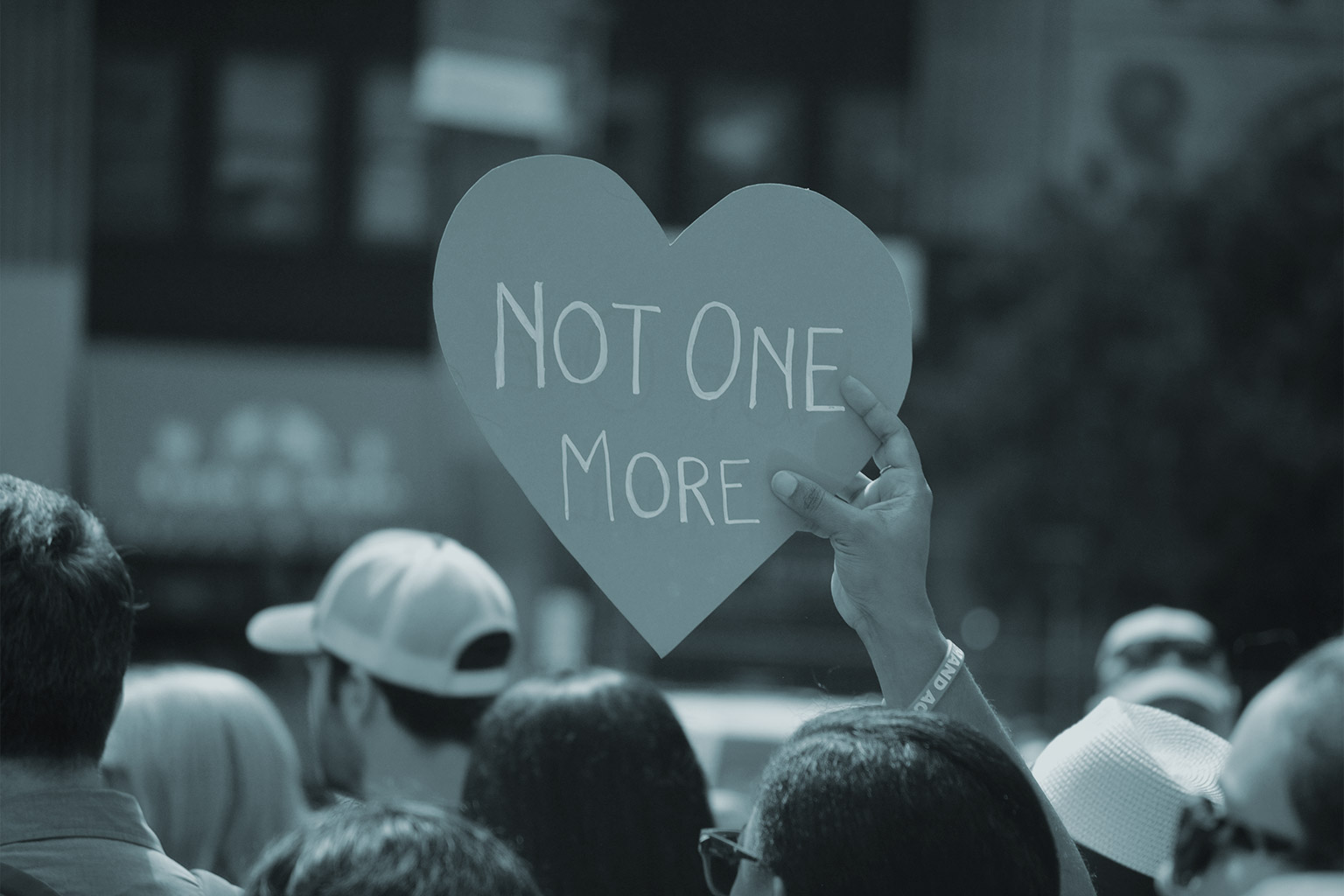During the COVID-19 pandemic, people spent a lot of time isolated and indoors, which helped foster an environment where some people now feel lonelier than ever. The result is a loss of social connectedness—the degree to which people feel the social connections and relationships in their lives to satisfy their wants and needs. When social…
Your Welcoa membership has expired.
Workplaces Aren’t Safe Until We Address Gun Violence
Warning! This article contains sensitive content related to gun violence. If you or someone you love has been impacted by gun violence, you may choose to skip this article.
According to the CDC, 45,222 people died from gun-related injuries in 2020.(1) These losses include gun violence and suicide. In the United States, 58% of adults or someone they care for have experienced gun violence in their lifetime.(2)
Apply that statistic to your workforce. Based on national averages, approximately 30% of your workforce has high cholesterol or high blood pressure, but 58% of your workforce has experienced gun violence personally or against someone they love. Ideally, there wouldn’t need to be a dollar amount applied to this to make the point, but here it is, approximately $49 billion is lost annually in victims’ lost productivity and wages.(3)
If you are in the lucky 42% who have not experienced gun violence, this statistic may seem made up to you. However, for those of us who have, this statistic literally haunts us in the form of trauma every time we experience mass shootings among a myriad of other things that produce a flood of memories and emotions. Even on those days, we do our best to show up to work.
At my fifth-grade lunch table, we were playing an old-fashioned game of telephone (this was before the days of fidgets and cell phones). One of my fellow classmates interrupted to tell us that a teenage boy in our town had shot and killed his mother, father, and two younger sisters. They went on to say that he was at the neighboring high school holding a classroom hostage with a gun. This was absurd to me. I knew this teenage boy. I had just been at his family’s house for a Derby Day party a few weeks earlier. His sisters were my friends. I was angry at these kids for sharing such vile rumors. I was indignant and certain that the next day I would have the chance to tell them how cruel their behavior had been. Sadly, I did not get that chance. Instead, I saw news clips of little body bags being brought out of the house where I had just played.
Three years later, in that same upper-middle-class suburban town, my sister’s best friend was shot through her bedroom window while she was sleeping peacefully in her home. She was killed by a mentally ill ex-boyfriend. Her family had a restraining order against him.
I am in the 58%. As I write these stories, I can feel the trauma quicken my breath and tighten every muscle in my body. I have to remind myself to breathe. I have a close friend from another town who is a survivor of a school shooting. One might find this surprising that I made a friend as an adult who also has gun violence in her history, but then again, the statistic is 58%. Perhaps it is not so odd after all.
Safety is a core tenet of our ability to access well-being. WELCOA’s definition of safety includes “protection from both physical and emotional harm at work.” Safety requires organizational action to protect physical health by creating protocols that protect employees from exposure to potentially dangerous work environments, which the pandemic exposed to be a complex task. Physical safety also includes protection from workplace violence and protection from systemic inequities. Safety also includes psychological safety, ensuring that employees feel secure enough to express themselves, take calculated risks and show vulnerability.
At the start of 2022, our CEO, Sara Martin wrote, “Safety is one of seven areas of well-being. WELCOA respects the research that underscores a workplace’s responsibility to address this core tenet of wellness…The root of why employees are unable to achieve well-being is that they lack the necessary support to meet their basic requirements for safety…While traditionally we have focused on aspects of thriving such as regular exercise, a healthy diet, and mindfulness, this year will focus on root causes that prevent and limit healthy behaviors.”
Gun violence is a major issue of both physical and psychological safety affecting our workplaces. We stand alongside organizations such as Kaiser Permanente, and the American Academy of Pediatrics to clearly say that gun violence (including by suicide) is a public health crisis. It is the position of WELCOA that gun violence is also a crisis for workplace health and safety. In 2017, there were 351 gun homicides that took place in the workplace.(4) That’s almost one per day.
WELCOA supports well-researched and established policies. These include:
- Gun violence prevention research to inform policy evolution
- Gun legislation that includes increasing the age of purchasing a gun, strengthening background checks, extreme risk protection orders, banning assault weapons, and requiring safe firearm storage
We recognize that this issue can be divisive, but we don’t believe it has to be. We invite you to engage in civil conversation with your colleagues about what we can agree on when it comes to gun policy.
According to Pew Research:
- 81% of Americans support universal background checks
- 87% of Americans want to ban gun purchases by those with mental illness
Footnotes:
(1) https://usafacts.org/data/topics/security-safety/crime-and-justice/firearms/firearm-deaths/
(2) https://everytownresearch.org/graph/58-percent-of-american-adults-or-someone-they-care-for-have-experienced-gun-violence-in-their-lifetime/
(3) https://everytownsupportfund.org/initiatives/business-leaders/impact-of-gun-violence-on-business/
(4) https://everytownsupportfund.org/initiatives/business-leaders/impact-of-gun-violence-on-business/




